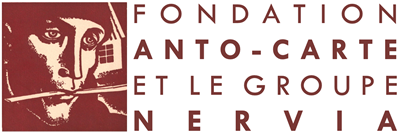
*Camus Gustave
(04/04/1914, Châtelet (BE) - Mons (BE), 09/06/1984)
His paternal Camus ancestors came from Chiny, where they were blacksmiths. His grandfather, Henri Camus, born in 1847, left Chiny to settle in Châtelet, where he became a puddler. His father, Hector Camus, born in 1877, a factory worker in Châtelet, married Marie-Thérèse Renard there, and they had five children, Gustave being the youngest.
Gustave Camus married twice. In 1936, after just a few months of marriage, he lost his first wife Jeanne Chavepeyer, sister of painters Hector and Albert Chavepeyer and photographer Emile Chavepeyer 1. He remarried in 1950 to Olivia Brosteaux. He had no descendants. He was knighted as a baron on 14 May 19842.
At the age of 14, he was apprenticed to a house painter, but gave up this activity as soon as he could earn a living from his art, in 1939. He studied drawing with the sculptor Eugène Paulus at the École industrielle de Charleroi (1930-1934), and with Léon Van den Houten at the Université du Travail (1932-1937). With Georges Wasterlain, he founded the group L'Art vivant au pays de Charleroi (1933). After the war, critics confirmed his talent and he taught painting and drawing at the Académie des Beaux-Arts in Mons (1951-1976), where he was director from 1961 to 1966, and again from 1975 to 1976). His students included Daniel Pelletti and Jacqueline Brison.
His first period was Impressionist (1930-1946), although he was closer to Fauvism than to Monet.
It was following a trip to Brittany that he inaugurated his second period, which was to have a more profound effect on his work (1946-1950).3 There was a whole period of research that took him back to Wallonia (1950): slag heaps and roller frames entered his painting, which became more graphic.4 His aim was to disseminate Walloon art, of which he was an ardent defender. His aim was to disseminate Walloon art, of which he was an ardent defender. He took part in two artists' groups, Hainaut cinq, which set out to "Offer to our eyes the image of the beauty that the Walloon land can inspire "5 (1964) and Octo (1979).
Gustave Camus married twice. In 1936, after just a few months of marriage, he lost his first wife Jeanne Chavepeyer, sister of painters Hector and Albert Chavepeyer and photographer Emile Chavepeyer 1. He remarried in 1950 to Olivia Brosteaux. He had no descendants. He was knighted as a baron on 14 May 19842.
At the age of 14, he was apprenticed to a house painter, but gave up this activity as soon as he could earn a living from his art, in 1939. He studied drawing with the sculptor Eugène Paulus at the École industrielle de Charleroi (1930-1934), and with Léon Van den Houten at the Université du Travail (1932-1937). With Georges Wasterlain, he founded the group L'Art vivant au pays de Charleroi (1933). After the war, critics confirmed his talent and he taught painting and drawing at the Académie des Beaux-Arts in Mons (1951-1976), where he was director from 1961 to 1966, and again from 1975 to 1976). His students included Daniel Pelletti and Jacqueline Brison.
His first period was Impressionist (1930-1946), although he was closer to Fauvism than to Monet.
It was following a trip to Brittany that he inaugurated his second period, which was to have a more profound effect on his work (1946-1950).3 There was a whole period of research that took him back to Wallonia (1950): slag heaps and roller frames entered his painting, which became more graphic.4 His aim was to disseminate Walloon art, of which he was an ardent defender. His aim was to disseminate Walloon art, of which he was an ardent defender. He took part in two artists' groups, Hainaut cinq, which set out to "Offer to our eyes the image of the beauty that the Walloon land can inspire "5 (1964) and Octo (1979).
